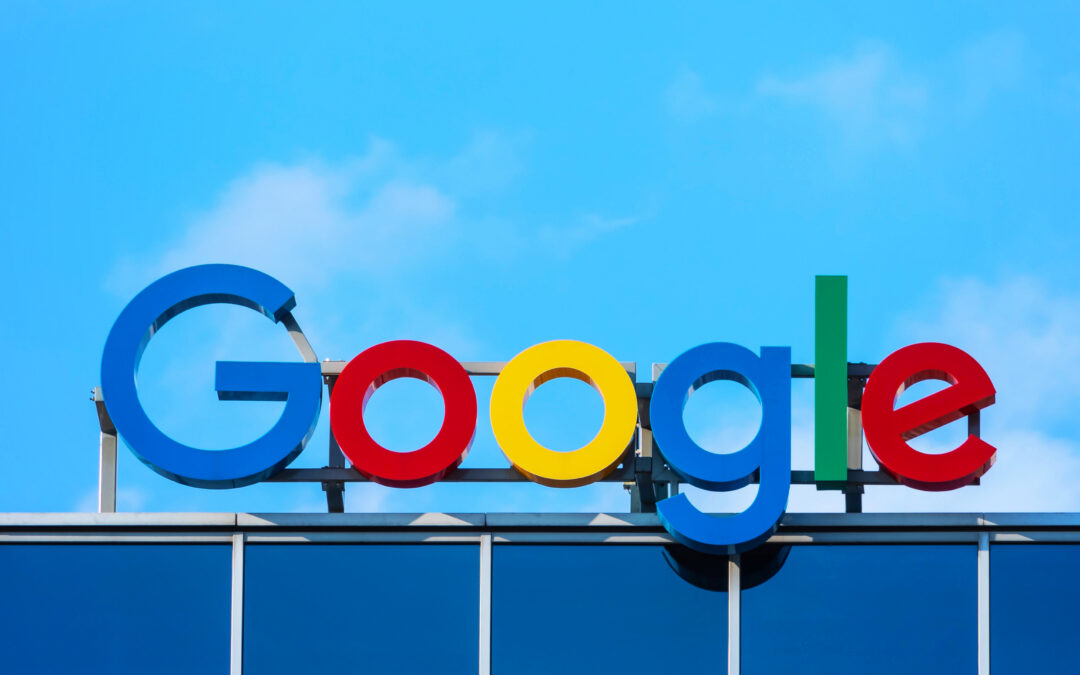
by threshold | Jan 25, 2022 | Creative, Design, General, Marketing, Thought Leadership
 Written by Kathy Jones, Agency Operations Manager
Written by Kathy Jones, Agency Operations Manager
With an ever changing real estate industry, developing a real estate marketing plan informed by strategic thinking is absolutely essential to be able to stand out from your competitors. When it comes to your print marketing strategy, you may feel that your number one goal is to create the perfect flyer or brochure that your team can distribute in high traffic areas. However, what happens next when the prospect receives and reads the flyer is oftentimes an afterthought. In reality, it takes careful consideration of the full leasing/sales journey to create print assets that really make an impact on your prospects.
While COVID-19 brought a large decrease in the number of prospects touring leasing offices and sales centers in person, that number is quickly on the rise again and so is print marketing. Since the real estate industry is quickly changing, your strategic plan should also be changing. Your vision will likely remain the same but your goals should be frequently reviewed. For most clients to the real estate industry, the enduring vision is to impact your bottom line (e.g. improving occupancy rates or increasing revenue), but you can’t get there unless you set more specific, granular goals along the way. For example, one goal might be to increase the number of leases or sales contracts that are signed each month. In order for you to achieve that goal, you need to build a hand-crafted strategy that will push prospects into your leasing office or sales center to close the deal.

Every community is different. One might have a great location where others might have strong brand awareness in their market. If your community is located in a great location, guerilla marketing can be a great supplement to your existing digital marketing. But what happens once your prospect receives your flyer? The prospect will likely view your website and head into your leasing office or sales center for a tour.
Furthermore, your strategic plan shouldn’t end once the prospect walks through the door. A well thought out tour is your next step. In what order should property information be presented to your prospect? In most cases, this is the order of operations that yields the best results:
- Property overview
- Apartment amenities
- Community amenities
- Property location
- Floor plan types
This gives prospects the ability to get to know your property and hopefully be wowed by amenities so they’re already picturing themselves living in your community and exploring the local neighborhood by the time you get down to the specifics of floor plan options. This makes many prospects eager to lock down a specific floor plan as you broach this subject with them during your tour.

Leasing offices and sales centers are likely your last chance to wow your prospect and can make or break your prospect’s likelihood of signing a lease. You may have a well thought out strategy to get them in the office and a tour strategy that piques their interest, but what is really going to make you stand out from the crowd? Creating an experience that will resonate is key, so environmental graphics within your leasing/sales center are important factors in sealing the deal. Living green walls, Instagram walls with neon signs, or custom corkboards where you can add photos of prospects signing are all unique ways to achieve that wow factor. If you stay on top of trends, you won’t be surprised. In fact, you’ll be far ahead of others because you’ll have had years to strategize and adapt, so that when disruption hits, you not only have a plan, but are already implementing it.

by threshold | Oct 13, 2020 | Culture, Marketing, Tech/Web
Updated 9/8/21
With the oldest representatives of Gen Z now 24 years old, this generation has already redefined the student housing market and is well on its way to doing the same for multifamily. As their coming of age continues to change the student housing and multifamily industries, here’s what you should know if you want to remain at the cutting edge of the industry and future-proof your marketing strategy. We’ll break down who Gen Z is, what motivates Gen Z’s housing choices, and how to market housing to Gen Z. Let’s dive in.
Who Is Gen Z?
First of all, let’s nail down some definitions. Although from a practical standpoint, generational boundaries are more of a guideline, the official birth years for Gen Z fall between 1997 and 2012. That means as of 2021, the oldest Gen Zers (or “Zoomers”) are now 24 years old. As a result, many Gen Zers are now becoming first-time renters in both the student housing and multi-family markets, and within the next decade, the entire generation will be 18 or older.
Besides their years of birth, Gen Z is defined by the digital and cultural trends that formed (and continue to inform) the zeitgeist of their formative years. This generation is dominated by digital natives—i.e. people who have not only never experienced a time without the internet, but who grew up using smartphones, social media, and other digital technologies and platforms. They are on track to be the most educated generation on average and tend to be socially conscious and climate conscious.
In terms of their values, Gen Z is considered to be similar to Millennials but antithetical to the Boomer generation. Many Gen Zers appear to reject the traditional values of the Boomer generation: for example, Gen Z is less likely to value buying a home, marrying young (or marrying at all), having children, achieving traditional career success, or conforming to traditionally-defined gender roles.
What Motivates Gen Z?
Gen Z’s digital and social sensibilities define their key motivations within the housing market. For example, it should come as no surprise that, even more than Millennials, the digital natives of Gen Z are motivated by smart home tech, access to high-speed internet, and a property’s digital presence. They prefer having the ability to learn about a property online without first having to visit in person and expect online options for lease applications, rent payments, and maintenance requests. In a similar vein, this group—accustomed to having so much of their life at their literal fingertips—appreciates convenience and will choose housing options that cater to it.
Beyond their digital expectations, Gen Z is also highly motivated by affordability. As this generation enters the market during one of America’s most staggering recessions, when tuition costs are higher than ever, and job security is hard to come by, they know they have to be frugal and cautious. For similar reasons, this generation values flexibility and efficiency. They want to get what they need without paying for extra; they want low utility costs and high value, and they want the freedom to change their housing when their needs change, especially during a time of instability.
Additionally, this climate-conscious generation is motivated by sustainability. They are early adopters of sustainable alternatives to everyday goods and services and likely to appreciate brands that they see as contributing to climate solutions rather than to climate problems.
How is Gen Z Changing the Housing Market?
As Gen Z enters the renting market, many developers and property management companies are beginning to see what is most important to these renters as well as what are some of the deal-breakers.
We’ve already seen a shift to online rent payment options, online leasing, and virtual tours. In addition to these changes, we’re beginning to see an incorporation of more smart-home technologies with new developments and upgrades to existing apartments. These changes speak to some of the shared values placed on digital convenience and tech-savvy by Gen Z and Millennials. While the latter have been shaping housing trends for over a decade, Gen Z will likely push these trends even further. In particular, smart-home technologies with phone compatibility are likely to be the next wave of upgrades. Some of the amenities we’re beginning to see in this area include:
- Smart thermostats
- Smart door locks and keyless entry (for apartments and amenity spaces)
- Package lockers
- Smart speakers (often given as leasing incentives)
- Smart lights
- Smart appliances
- App-based amenity reservation system
On the subject of sustainability, many developers are setting new standards with LEED certification. Since Gen Z values contributing to efforts that protect the environment, we may see an increase in LEED certified buildings and the marketing around these certifications to appeal to the interests of Gen Z renters. Other features and amenities we’re beginning to see in this area include:
- Vehicle recharging stations
- LED lighting
- On-site renewable energy
- Recycling options
- Daylighting
- High-efficiency appliances
- Community gardens
Another interesting trend that could emerge is co-living. While it’s still a niche industry, co-living may appeal to the convenience and affordability motivators for Gen Z. Younger renters are accustomed to and actively seek out living with a roommate. The housing affordability crisis of today may even motivate Gen Z renters to seek out co-living options in spite of the COVID-19 pandemic and any lingering cultural shift it may create.
How To Market Apartments to Gen Z
Whether you’re marketing student housing or multifamily apartments, appealing to a Gen Z audience requires more than just running some ads on Instagram or creating a TikTok for your property. While most apartment marketers and asset managers already know that social media presence is a must when marketing to Zoomers, there are additional factors you should take into account.
Branding & Positioning for Gen Z
Gen Z likes to see authenticity, social impact awareness, sustainability, and modernity from their brands, and apartments are no exception. For new developments, it’s easier to steer your branding in this direction, but for existing communities, it can be a challenge to adapt to these preferences after the fact. Consider drafting new brand messaging guidelines for everything from your social media posts to your website and ad copy, then update these digital assets accordingly. Gen Z can smell inauthenticity a mile away, so brand voices that are conversational, approachable, and down-to-earth tend to resonate better with this crowd. And after all, there’s something inherently appealing about a brand that appears to “cut through the bullshit” and deliver straightforward facts. While some existing brands can achieve this with just some well-placed tweaks, in some cases, a full rebrand could be the glow-up your community needs to attract Gen Z renters.
Gen Z also tends to prefer a brand look & feel that is colorful, playful, and simple. In general, think organic shapes, minimalist composition, and hand-drawn patterns and textures. By contrast, the ultra-luxe look & feel of metallic accents, moody lighting, and elegant or crisp lines don’t tend to play as well with this audience. That’s not a hard and fast rule though, so consider which of these elements, if any, will play well with your interior design and existing branding.
Digital Marketing for Gen Z
You already know that a social media presence and social media ads are a must for Gen Zers. To maximize your impact on these platforms, video is a must. TikTok videos, Instagram reels, and Instagram Stories are excellent ways to give quick video tours of your floor plans, show off resident events, introduce your on-site team members, and more.
In addition to these platforms, your website and Google My Business page are also key to earning leads and leases from Gen Z renters. You don’t have to have the fanciest website, but a modern feel with solid UX (including, at a bare minimum, no broken links) can go a long way. That goes double for a GMB page with updated info, a working link to your website, attractive community photos, and positive reviews.
And because most housing searches begin with a Google search, especially among the digital natives of Gen Z, Search Ads are a must if you want to reach your prospects when they are most ready to click and convert.

by threshold | Sep 22, 2020 | Creative, Design, Digital Marketing, Marketing, Tech/Web, Thought Leadership
Every good digital marketing plan for real estate must take into account the user experience on property websites. After all, a digital ad is only as good as the landing page it directs to, and a bad first impression can destroy your chances with a prospect. Real estate marketers today know they need to provide a great user experience on property websites, but they aren’t always sure how to improve UX or use strong UX design from the beginning.
If this sounds like you, don’t worry, we’re going to go through some UX tips for apartment websites. These tips range from quick fixes to broader strategies, but every one of them will help you build websites that meet user’s needs and encourage them to take the actions that are important for your bottom line.
Study User Behavior
First and foremost, you need to understand your users. Not just users in general, but your users; your audience’s browsing habits, goals, needs, motivators, and preferences. Each market is different and so is each person, but a few strategies can help you discover broad habits that your site should cater towards, like what information is important to your users and what device they usually use to search for housing or access your resident portal.
Conduct a Focus Group
A focus group survey can help you understand a lot about your audience. While the best focus groups require diligent survey design, the payoff can be massive.
When conducting focus groups, make sure to get as representative a sample as possible for your city, university, or age group. You might want to offer an incentive to attract more participants—for example, with a chance to win a gift card once the survey has been completed.
Avoid asking leading questions or limiting the answers your respondents can give. Keeping things open-ended is the best way to ensure you learn something you didn’t already know (or assume).
Use Scrollmaps
Scrollmaps are a tool you can use to study user behavior on a site that already exists. It shows you where users tend to linger on a page, where they tend to click, and which areas fail to hold their attention. This is a particularly useful tool if you want to identify areas for improvement on a website you’ve already built.
Scrollmaps can’t provide a full picture, however, because they don’t show you what your users would be doing if things were different. They can only show you what they are or aren’t doing right now. In other words, they’re better at identifying problems than solutions. Still, they can be a great place to start.
Study Your Google Analytics
For more insights into user behavior on already existing sites, Google Analytics is a fantastic resource. It allows you to see which pages have the highest bounce rate or lowest time spent on-page, which pages are most viewed and which are rarely seen. These insights can help you identify sections of your site that need improvement. Combined with the use of scrollmaps, this strategy can give you a lot of information about your current UX without having to ask users directly.
Consider Your Mobile User Experience

While many users’ housing searches take place primarily online, mobile phones and tablets still represent a significant portion of the traffic to your property website. In fact, a user is especially likely to encounter your property website on their phone during the discovery phase, when they’re forming their initial opinions and deciding which properties will move forward into their consideration phase. This means having a responsive website—one that’s optimized for a variety of screen sizes—is essential in making a good first impression.
If you’re not sure how to turn a website design that’s optimized for desktop into one that works on mobile, here are a few basic guidelines.
When it comes to website design for mobile:
- Stack content vertically instead of horizontally
- Use image carousels instead of images arranged in a grid pattern
- Implement expandable elements so users can expand and collapse information as they desire
- Use an expandable “hamburger” navigation menu that remains out-of-the-way when not in use
Address Long Loading Times
Nothing contributes to high bounce rates more than a slow load time. That’s because a slowly-loading page makes for a terrible user experience in a world grown accustomed to lightning-fast internet. Users just don’t have the time or patience to wait for your site to load, especially when they have other options available to them.
The best way to reduce page load times is to be aware of the common culprits—namely, video and images. When you have several large image or video files on a page, it takes much longer to load, even on the best internet available today. It’s best to keep each image or video under 500KB wherever possible.
That’s not your only option, though. Sometimes, you might need to include a large file (or several). In cases like these, you can instead defer certain elements from loading on the page until they’re needed, or until the rest of the page loads. For example, you can wait to load a video until a user scrolls to the section of the page it’s on.
Make Pages More Engaging

The longer a user spends on a page, the likelier they are to take a conversion action or become loyal to your brand. But you need to give them reasons to stick around, and that means offering a great experience while they’re there.
One of the best ways to improve website UX by making your pages more engaging is to incorporate great images and video onto as many pages as possible. Users like to have something visual to enhance their understanding of information and hold their focus.
For apartment websites, we highly recommend taking high-quality photos and video of your community and incorporating them throughout your webpages (not just on a gallery page). Virtual tours have become a must, and your homepage can be a great place to feature a professionally edited community tour video or even feature Matterports of your top floor plans.
Make Pages More Scannable
Much as website creators might want them to, users don’t read pages from start to finish. Instead, they scan pages for the information they need or content that engages their attention.
Work with user habits and not against them by making your pages easier to scan. This creates a better user experience on your property website and improves your chances of showing a user that your community is right for them.
Tips for making web pages more scannable include:
- Develop a clear hierarchy of information by using header tags, consistent font and formatting styles, and visual cues that help signal separate chunks of information (like font color, font weight, background color, and other design elements).
- Use headers that clearly signal the content they introduce (e.g. “Community Amenities” or “Amenities for an Active Lifestyle”).
- Avoid long blocks of text. Break up text into sections of about 100 words or less.
- Avoid repetition. Repetitiveness confuses the reader about where they can find the information they’re looking for. It can also seem spammy to users and search engines alike.
- Use bullets or lists when you can (like we just did).
Make In-Demand Pages Accessible
Some pages are more important than others, and you want to make sure your users can easily find and use the pages they need the most (and the pages you most want them to use). For apartment websites, that’s typically your application portal, contact page, and resident portal. It might also be a page housing your virtual tour or floor plan availability. There are a few things you can do to make these in-demand pages more accessible.
Firstly, let’s talk about accessibility in terms of how easy it is to find. Use clear Call-To-Action buttons at the tops of pages—especially your homepage—to direct users to what they need and where you want them to go. You might also use borders and contrasting colors in your navigation menu or headers to make links to these pages clearer and more attractive.

Making pages more accessible also means making them easier to use for as many users as possible, including those with disabilities. For example, make sure you use fonts that are large enough for all users to read. You should also avoid using colors that provide poor contrast with one another, especially for text and CTA buttons.
Don’t Forget About Micro-Copy
“Micro-copy” refers to those small pieces of text that guide a user through your website, like the text on a CTA button or the error message they get when they fill out a form incorrectly. It’s easy to overlook the power of strategic micro-copy, but these are often high-impact areas that define the quality of a user’s experience in spite of their relatively small real estate.
Beyond their usefulness in guiding a user clearly through your website experience, micro-copy also offers a great opportunity to turn something generic into something that expresses your unique brand and really makes an impression on users. For example, the ubiquitous “Submit” button is boring and not all that descriptive. A button reading “Send My Message” or “Make Me a VIP” is more descriptive, personal, and flavorful.
Micro-copy applies to areas like CTAs and form fills but can also include hover copy to let a user know something is clickable and what will happen when they click (e.g. on an image or button), like in the below example.

Micro-copy also allows you to set expectations for what will happen when a user does something, which makes them far more likely to take the conversion actions you want them to take. For example, if you want the user to contact you to schedule a tour or start an application, including the text “We’ll read your message thoroughly and get back to you within 24 hours,” near the contact form gives a user the confidence that taking that action will lead to their desired result.
That’s all our tips for improving UX on apartment websites! If you want to learn more about UX or get professional assistance with your UX Design, you can do so by filling out our Contact Form. We’d love to hear from you.

by threshold | Sep 1, 2020 | Digital Marketing, Marketing, Thought Leadership
We get this question often: “Can I pause my digital marketing now that I’m 100% leased?” It’s a reasonable question. You might be thinking now is a great time to save money by cutting back on ad spend or completely pausing digital marketing altogether. But ultimately, we don’t recommend this strategy when it comes to digital marketing for apartments. In short, it won’t benefit your apartment marketing plan as much as you think.
Why? Well there are a few reasons. In fact, there are enough factors involved that we decided it was time to put it all together in an easy-to-reference blog post. Whether you’re one of our digital clients or a real estate brand looking for marketing advice, we hope this can answer one of our most frequently asked questions.
Awareness Marketing Never Rests
The primary reason we don’t recommend pausing your digital marketing when you’re 100% leased is that your digital marketing plan should find ways to reach prospects at every stage of their buyer journey, and that includes the awareness phase. In fact, being 100% leased presents the perfect opportunity to scale back your other strategies (like retargeting and lead generation) and focus more of your attention and spend on awareness tactics.
Put simply, now is the time to make your audience aware of your brand before they even have the immediate need to find a new apartment. Building that awareness among your audience allows you to enjoy better results later on, as more people will move into your sales funnel further down the road when availability opens back up.
We’ll tell you more about how you can implement awareness tactics in the “What To Do Instead of Pausing Digital Marketing” section below.
You’ll Rob Yourself of Optimization Potential

You’ve heard that practice makes perfect, and it’s true for marketing too. Any good apartment marketing plan includes room for learning: learning about your market, your audience, and what works for your brand.
Marketing is most expensive at the beginning, and that’s partly because the best digital marketing for apartments engages in continuous optimization. Your goal isn’t to get it exactly right from the very beginning; it’s to start smart but get smarter along the way as your KPIs deliver valuable insights.
And the learning never stops. User habits, market trends, local competition, and a thousand other factors will keep you on your toes. Especially during times of change, it’s important to stay abreast of how your marketing strategy is performing. Even under normal circumstances, pausing your digital marketing and then trying to pick up where you left off once your occupancy starts trending downward again is harder than you might think. That brings us to the next point:
Momentum Loss Means Higher Costs Later
You may have heard that it’s energy-efficient to maintain a relatively stable temperature in your home even while you’re not there. This is because your HVAC has to work much harder to bring your home to a dramatically different temperature than it works to maintain a consistent temperature over time.
The same basic concept is true when it comes to digital marketing for apartments. After all, another reason that marketing is the most challenging at the beginning is that you’re starting from zero: zero brand awareness, zero brand loyalty, zero brand trust. The best marketing results emerge once you’ve gotten over the awareness hump to earn a little cultural currency.
In other words, your marketing campaigns have to do the most heavy lifting when you’re starting from a standstill. Though pausing campaigns may not have negative short-term effects, in the long-term, you’ll lose the progress you once made in terms of building awareness, recognition, and trust within your market, and the next time you start, you’ll be starting fresh, subject to those higher start-up costs as you once again lay the foundation you need for better results.
Put in technical terms, before it has a chance to normalize again, your Cost Per Acquisition or Cost Per Conversion will initially rise, likely to the degree that it will offset any money you saved by putting your campaigns on pause.
Continued Momentum Means Lower Costs Later

If lost momentum means higher marketing costs later, then the converse is also true, and not just because you’ll benefit from continued optimization and stable brand recognition. You’ll also benefit from other advantages that can only be built over time.
As brand awareness and loyalty build with continued marketing over time, so too do SEO rankings and brand reputation. These elements give you a stronger foundation to draw from later so your paid marketing isn’t pulling as much weight; you’ll be enjoying organic traffic and providing great reasons for prospects to convert without paying as much to get your message in front of them.
Plus, if you continue generating leads now, you’ll have a larger lead base to start nurturing when availability returns. Imagine having an eager audience waiting to hear that you have apartments available for move-in. In fact, that leads us to our next section:
What To Do Instead of Pausing Digital Marketing
Instead of pausing your digital marketing entirely, we recommend switching your focus to the digital marketing strategies that help you out most in the long-term. Since you don’t need to put as much spend toward short-term strategies that earn quick results, you can redirect that spend to set yourself up for reliable results when you need them again.
Specifically, focusing on awareness campaigns, SEO, and reputation management is a great apartment marketing strategy when you’re 100% leased. As far as ads go, focus on awareness tactics highlighting your key differentiators like stand-out amenities and desirable location. Facebook campaigns, YouTube campaigns, and geofencing can be useful awareness tactics to employ during this time.
Beyond that, we also recommend establishing a Wait List (or “VIP List” if you want to get fancy) collecting the information of leads that come through right now. This way the conversions you get now can still help you later on when you need to sign new leases. This is especially useful for senior housing communities—whose prospects often have flexible moving timelines and may wait months to find the perfect place—or student housing communities where pre-leasing is the norm and turnover season is predictable.
Conclusion
While pausing your digital marketing may seem tempting once you’re 100% occupied, continuing your digital marketing efforts can actually save more money and earn better results in the long run. If you’re thinking about scaling back your digital campaigns, consider redistributing spend to awareness tactics, SEO improvements, and reputation management efforts that can promote long-term growth.
As always, if you’re looking for professional advice concerning which tactics you should be using while 100% leased, you can always reach out to our marketing experts for a free conversation—no strings attached.

by threshold | Aug 20, 2020 | Digital Marketing, Marketing, Tech/Web
Earlier this year, Google announced that it would be making updates to targeting capabilities for ads within the housing industry. In the wake of this announcement, many real estate brands and apartment marketers have been wondering what to do about the Google Ads targeting changes and how to ensure their digital campaigns continue to run smoothly and effectively. Today, we’ll be going over what you should do today to meet those goals.
Due for implementation on October 19, 2020, Google’s update will limit the targeting options for real estate ads run on Google platforms in order to bring ads on the platform into alignment with HUD standards. The change will impact ad campaigns in Google Ads, Gmail, and YouTube, some of the most popular and lucrative ad platforms in use by real estate brands today.
Google’s announcement comes in the wake of Facebook’s decision last year to limit its targeting options after the company faced criticisms that some of its targeting options conflicted with the Fair Housing Act (FHA) and other civil rights legislation concerning housing, employment, and finance. With these two industry leaders making these changes, we can likely expect to see new updates along the same lines emerge on other platforms as well in the future, although none have been announced as of today.
Google Ads Targeting Changes
So what exactly is changing? Google’s October update will restrict targeting options for housing, employment, and credit advertising shown to users in the US and Canada. Let’s break down what we know so far.
Broadly speaking, housing, employment, and credit ads will no longer be able to target or exclude users based on age, gender, marital status (or whether someone is getting married soon), parental status, or zip code. This policy only applies to in-scope ads targeting the US and/or Canada. These changes will bring the platform’s targeting tools more in line with legislation like the FHA, which is designed to ensure equitable conditions across the housing industry and reduce discrimination against protected classes of people.
This will also mean that any automatic bid adjustments made on the basis of any of the above targeting factors (age, gender, etc.) will no longer be possible.
Real estate marketers will still have many targeting options, however. They can continue to use all other Google Audiences, contextual targeting, automated bidding, and non-zip code geotargeting options. Let’s dig down into some specifics.
First and foremost, advertisers will still be able to target users based on browsing behavior (like what they search for and what websites they visit). This is already one of the most effective ways to reach qualified leads and this capability isn’t going away. For example, you can still target the keyword “student housing” to capture users searching for this term, even if you can’t target users between the ages of, say, 18 and 22.
Advertisers will also still be able to target based on Interests, providing the possibility of further nuance where useful. For example, if your property is located near a major stadium, you can still target people interested in sports.
Finally, let’s talk about geotargeting options. Targeting based on zip codes will no longer be possible for housing ads, which is a good thing. Zip codes are often drawn on the basis of districting practices that were (or are still) influenced by systemic racism and classism, such as red-lining or gerrymandering. This doesn’t mean that you can’t use location as a targeting factor, however. It just means that, instead of zip code targeting, you’ll need to rely on radius targeting. This will allow you to target users within a certain radius of your property, allowing you to generate qualified leads without the same risk of inequitable impact.
What You Need To Do Today
So what, if anything, should you be doing to prepare for this change? The vast majority of ad campaigns can continue uninterrupted, but if you are running ads that use any of the soon-to-be eliminated targeting options, you’ll want to take action sooner rather than later.
Once these changes are implemented in October 2020, any campaigns using the now-eliminated targeting options will automatically be paused. In order to ensure uninterrupted campaigns, we recommend you make the necessary adjustments to remove soon-defunct targeting options from your campaigns before October 2020.
Whether you’re reading this before or after October 2020, performing a self-audit on your existing ad campaigns (or having your marketing partner do this for you) is an important first step. Determine whether any of your existing campaigns use targeting options that will soon be eliminated, such as age targeting, zip code targeting, or targeting on the basis of family or marital status.
For any existing campaigns that use such targeting features, remove these targeting features. Then, if necessary, you may choose to implement other options that will have a similar targeting impact. For example, you may choose to replace zip code targeting with radius targeting.
After you’ve made the changes, keep an eye on your results and adjust as needed. Impressions, clicks, and cost-per-click are the Key Performance Indicators to focus on as you optimize your campaigns.
Overall, these targeting updates should still leave real estate marketers with the tools they need to see meaningful results that positively impact their bottom line. If you’re looking for more guidance on these changes and how your brand can adapt, don’t hesitate to reach out to the experts at Threshold. We’re always here to help.

 Written by Kathy Jones, Agency Operations Manager
Written by Kathy Jones, Agency Operations Manager












